Figure A7.1Average shares of total household food consumption values for animal source foods and food away from home by urban, peri-urban and rural area for selected high- and low-food-budget countries in Africa
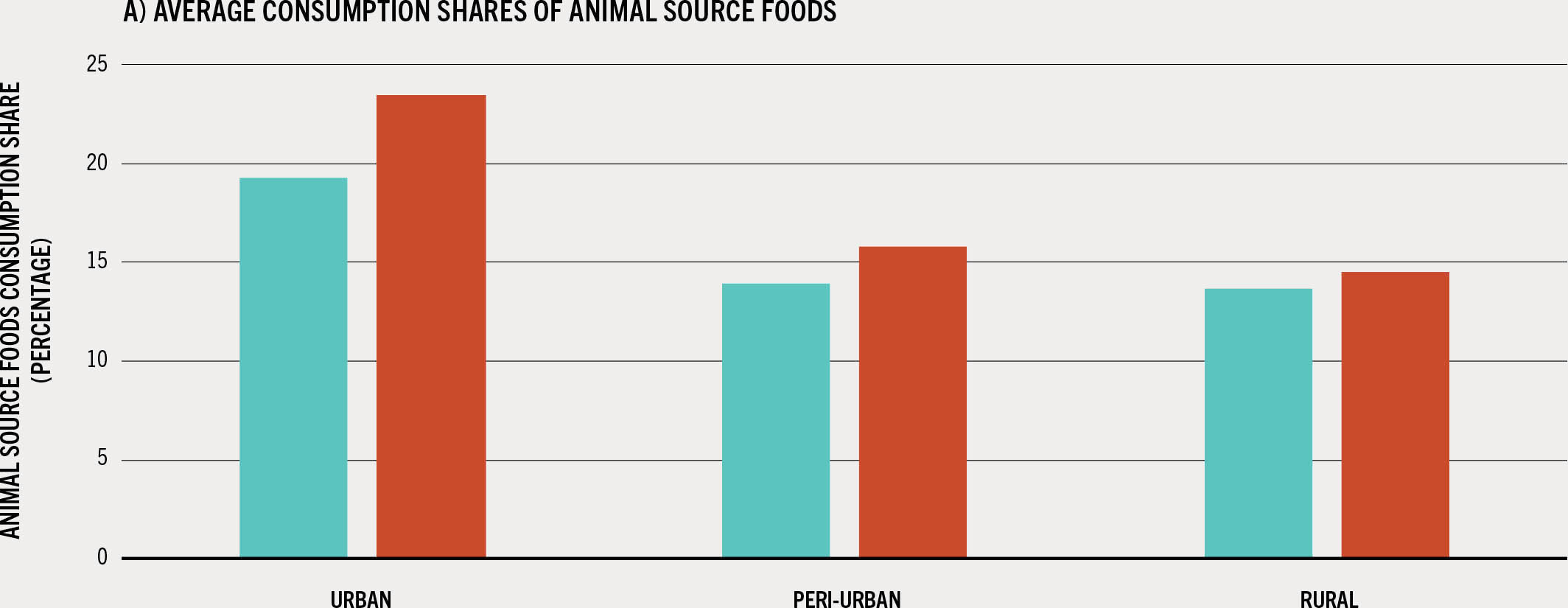

SOURCE: Dolislager, M.J, Holleman, C., Liverpool-Tasie, L.S.O. & Reardon, T. 2023. Analysis of food demand and supply across the rural–urban continuum in selected countries in Africa. Background paper for The State of Food Security and Nutrition in the World 2023. FAO Agricultural Development Economics Working Paper 23-09. Rome, FAO.
Tables A7.1 to A7.5 present the econometric results showing the marginal effectsbk of the determinants of the different food consumption shares of total food consumption (at market value) for: i) consumption shares of purchased food, for home consumption and food away from home (Table A7.1); ii) consumption shares of highly processed foods (Table A7.2); iii) consumption shares of animal source foods (Table A7.3); iv) consumption shares of food away from home (Table A7.4); and v) consumption shares of vegetables (Tables A7.5).
TABLE A7.1The non-price determinants of purchased food consumption shares (for home consumption and food away from home) in selected high- and low-food-budget countries in Africa
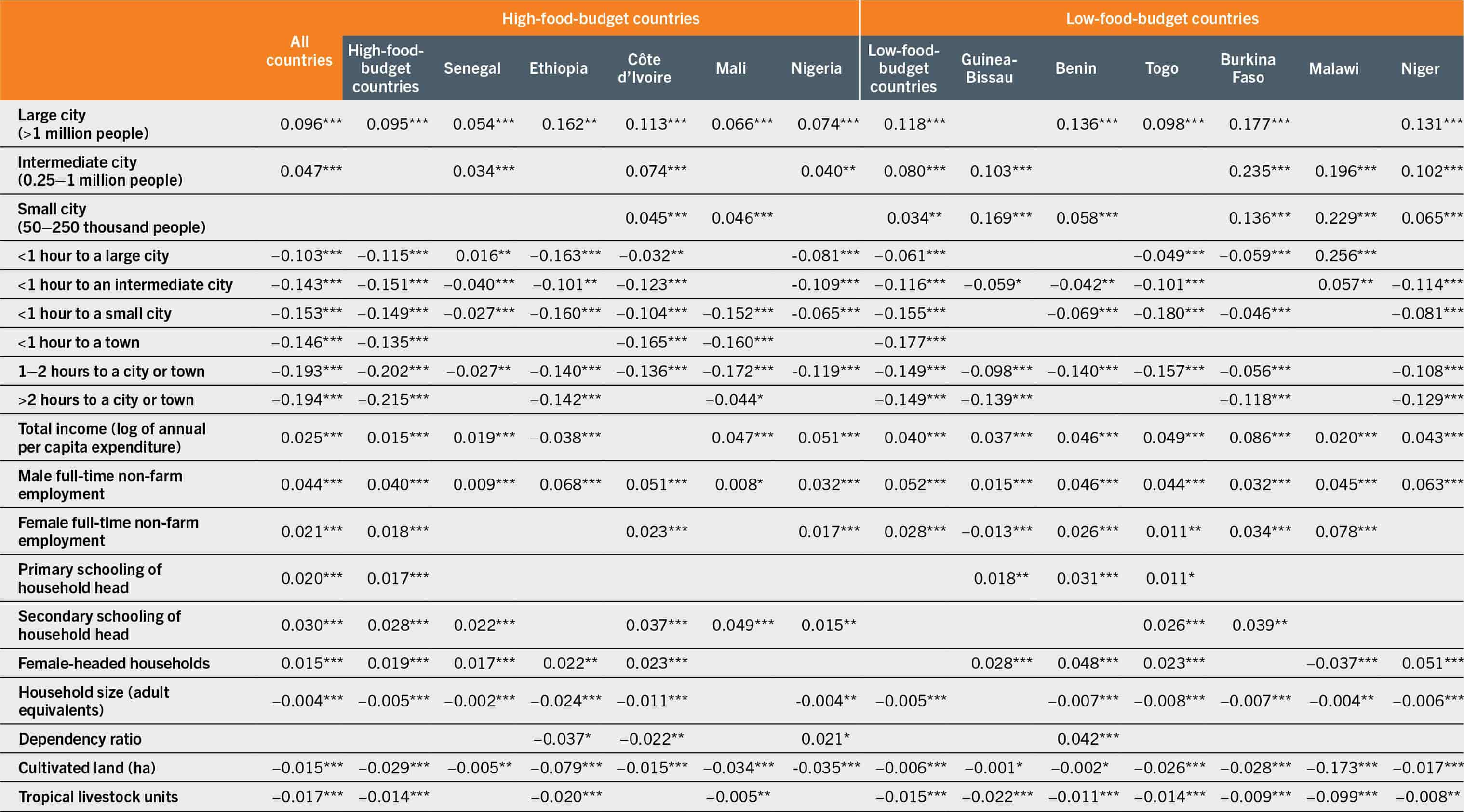
SOURCE: Dolislager, M.J, Holleman, C., Liverpool-Tasie, L.S.O. & Reardon, T. 2023. Analysis of food demand and supply across the rural–urban continuum in selected countries in Africa. Background paper for The State of Food Security and Nutrition in the World 2023. FAO Agricultural Development Economics Working Paper 23-09. Rome, FAO.
TABLE A7.2The non-price determinants of consumption shares of highly processed foods in selected high- and low-food-budget countries in Africa
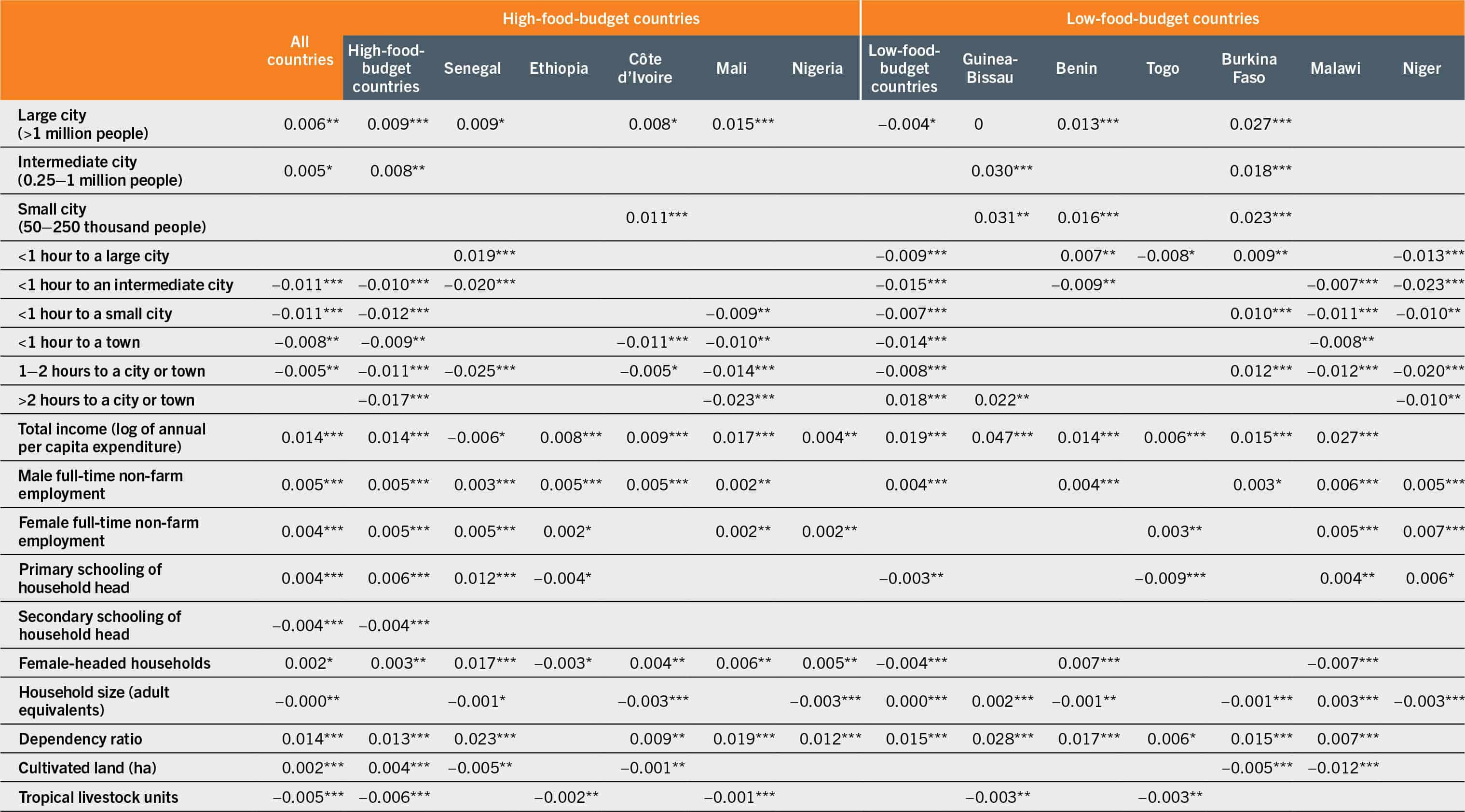
SOURCE: Dolislager, M.J, Holleman, C., Liverpool-Tasie, L.S.O. & Reardon, T. 2023. Analysis of food demand and supply across the rural–urban continuum in selected countries in Africa. Background paper for The State of Food Security and Nutrition in the World 2023. FAO Agricultural Development Economics Working Paper 23-09. Rome, FAO.
TABLE A7.3The non-price determinants of consumption shares of animal source foods in selected high- and low-food-budget countries in Africa
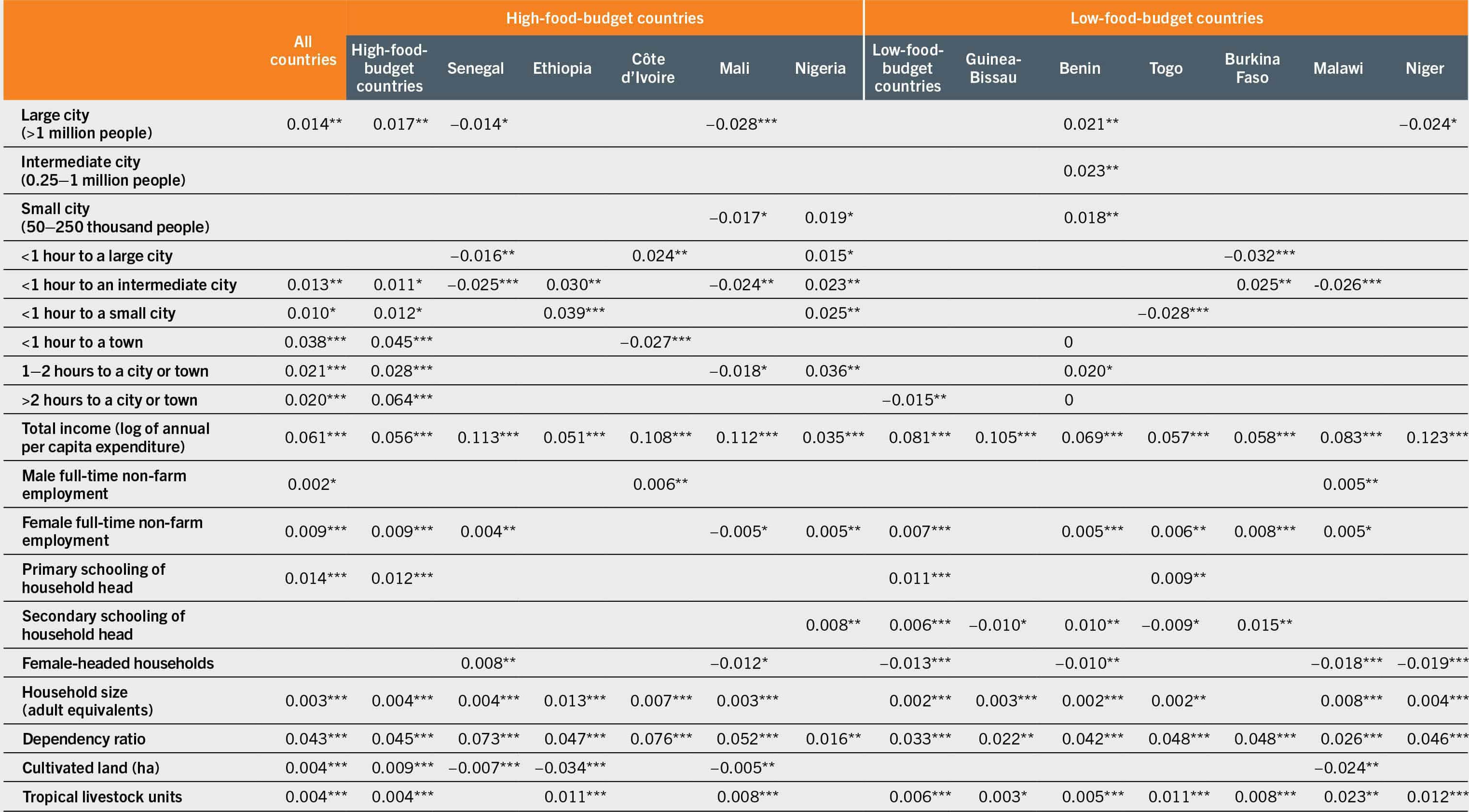
SOURCE: Dolislager, M.J, Holleman, C., Liverpool-Tasie, L.S.O. & Reardon, T. 2023. Analysis of food demand and supply across the rural–urban continuum in selected countries in Africa. Background paper for The State of Food Security and Nutrition in the World 2023. FAO Agricultural Development Economics Working Paper 23-09. Rome, FAO.
TABLE A7.4The non-price determinants of the consumption shares of food away from home in selected high- and low-food-budget countries in Africa
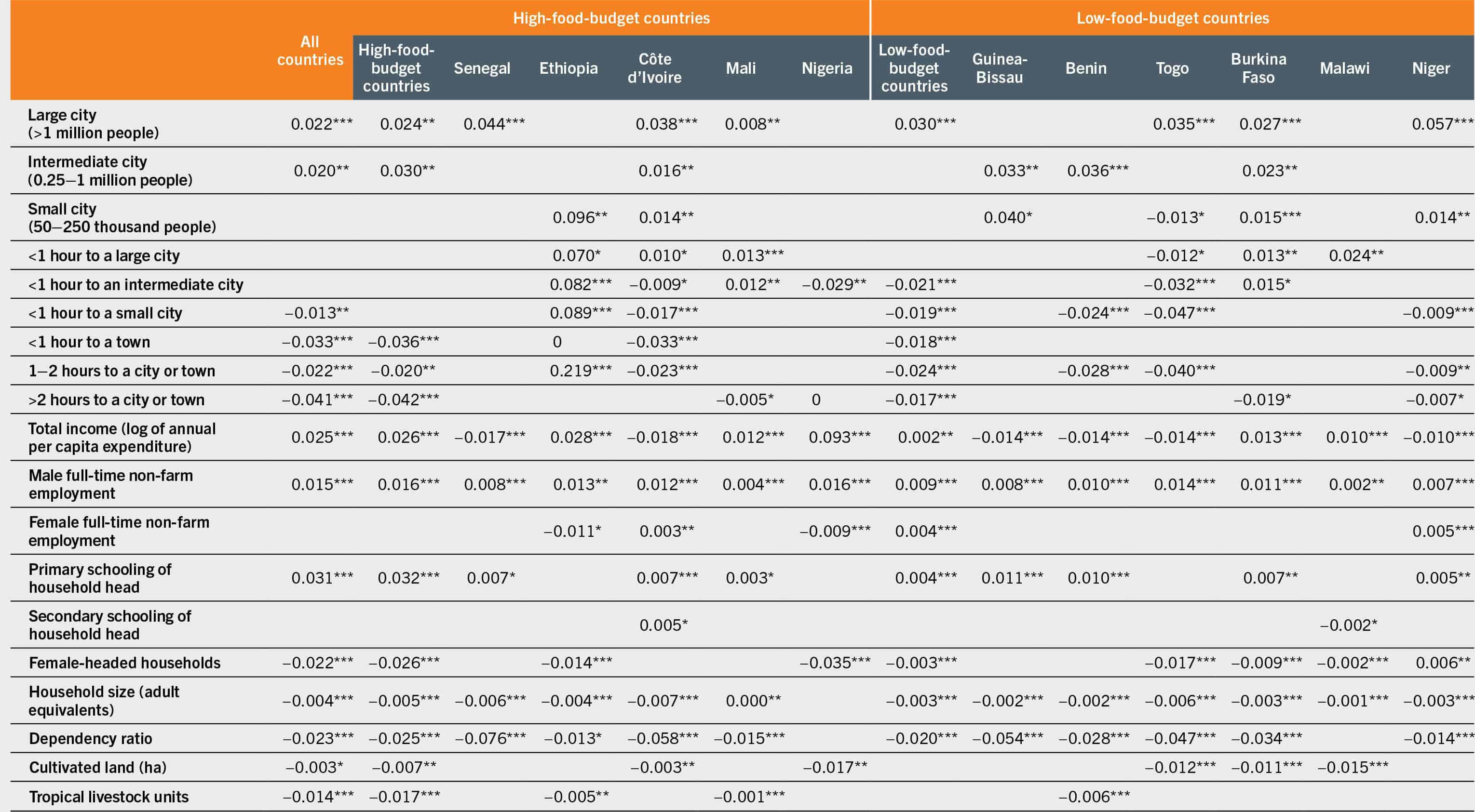
SOURCE: Dolislager, M.J, Holleman, C., Liverpool-Tasie, L.S.O. & Reardon, T. 2023. Analysis of food demand and supply across the rural–urban continuum in selected countries in Africa. Background paper for The State of Food Security and Nutrition in the World 2023. FAO Agricultural Development Economics Working Paper 23-09. Rome, FAO.
TABLE A7.5The non-price determinants of the consumption shares of vegetables in selected high- and low-food-budget countries in Africa

SOURCE: Dolislager, M.J, Holleman, C., Liverpool-Tasie, L.S.O. & Reardon, T. 2023. Analysis of food demand and supply across the rural–urban continuum in selected countries in Africa. Background paper for The State of Food Security and Nutrition in the World 2023. FAO Agricultural Development Economics Working Paper 23-09. Rome, FAO.
Only statistically significant marginal effects (at 10 percent or lower) are presented. The effect of location across the rural–urban continuum is captured by the ten URCA categories defined in Section 4.1, with the omission of the town category to serve as a reference category to which the other URCA variables are compared, i.e. the marginal effect of the “large city” category is interpreted as relative to the omitted URCA town variable. The marginal effect of prices and home assets is not shown (see source for full presentation of results). Countries included in the analysis: Benin, Burkina Faso, Côte d’Ivoire, Ethiopia, Guinea-Bissau, Malawi, Mali, Niger, Nigeria, Senegal and Togo. All surveys are 2018/19, except Malawi (2019/20).
For the full details on the data sources, methodology and interpretation see Dolislager et al. (2023).52


